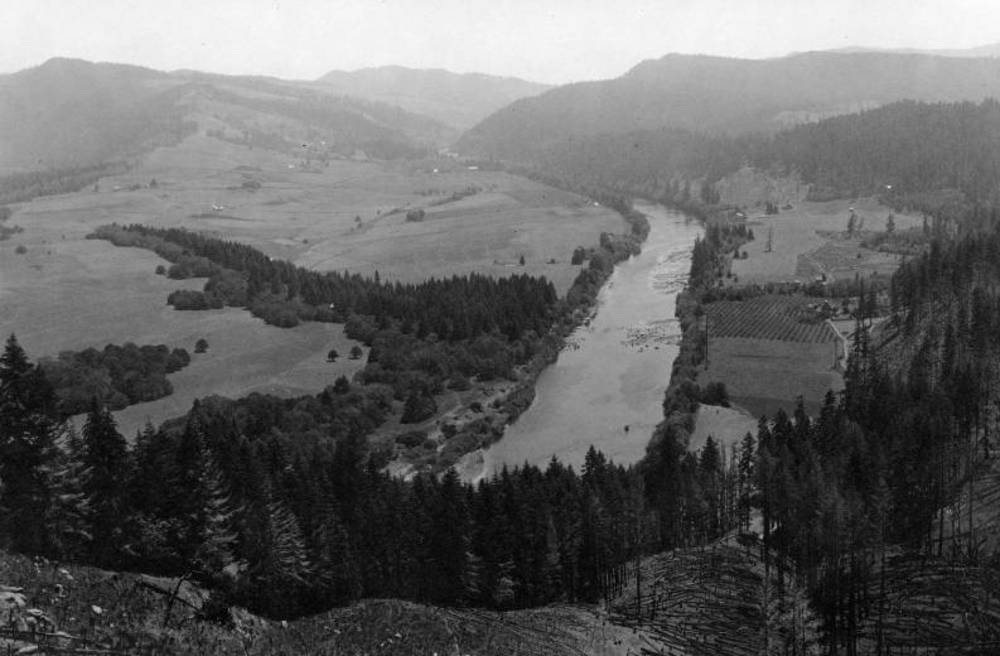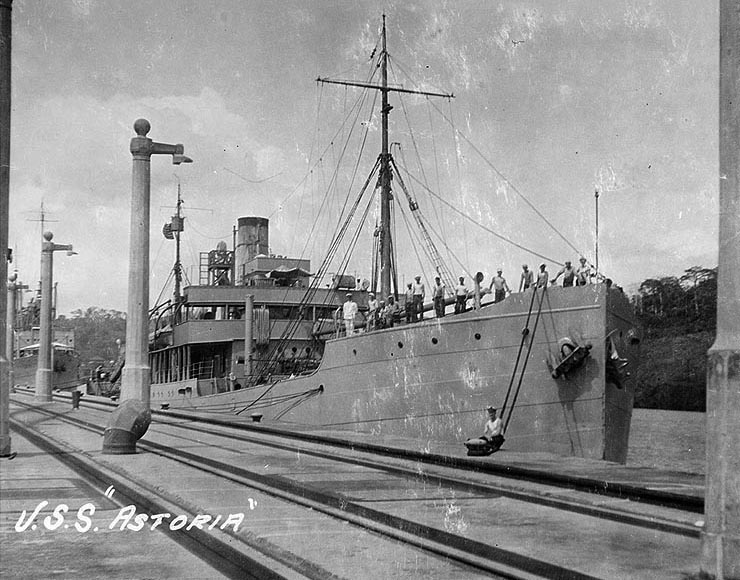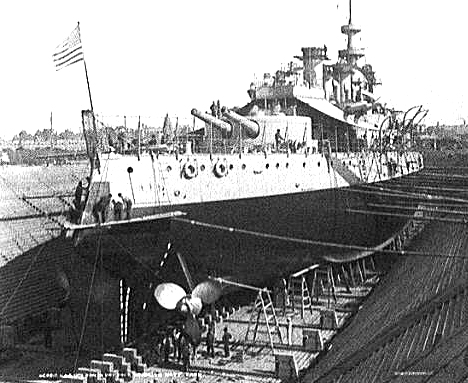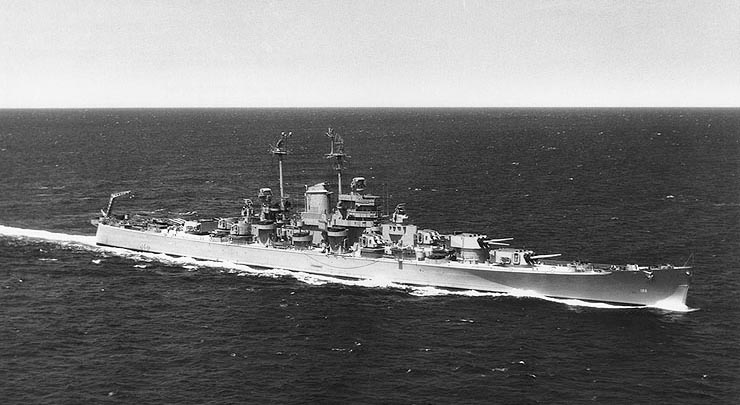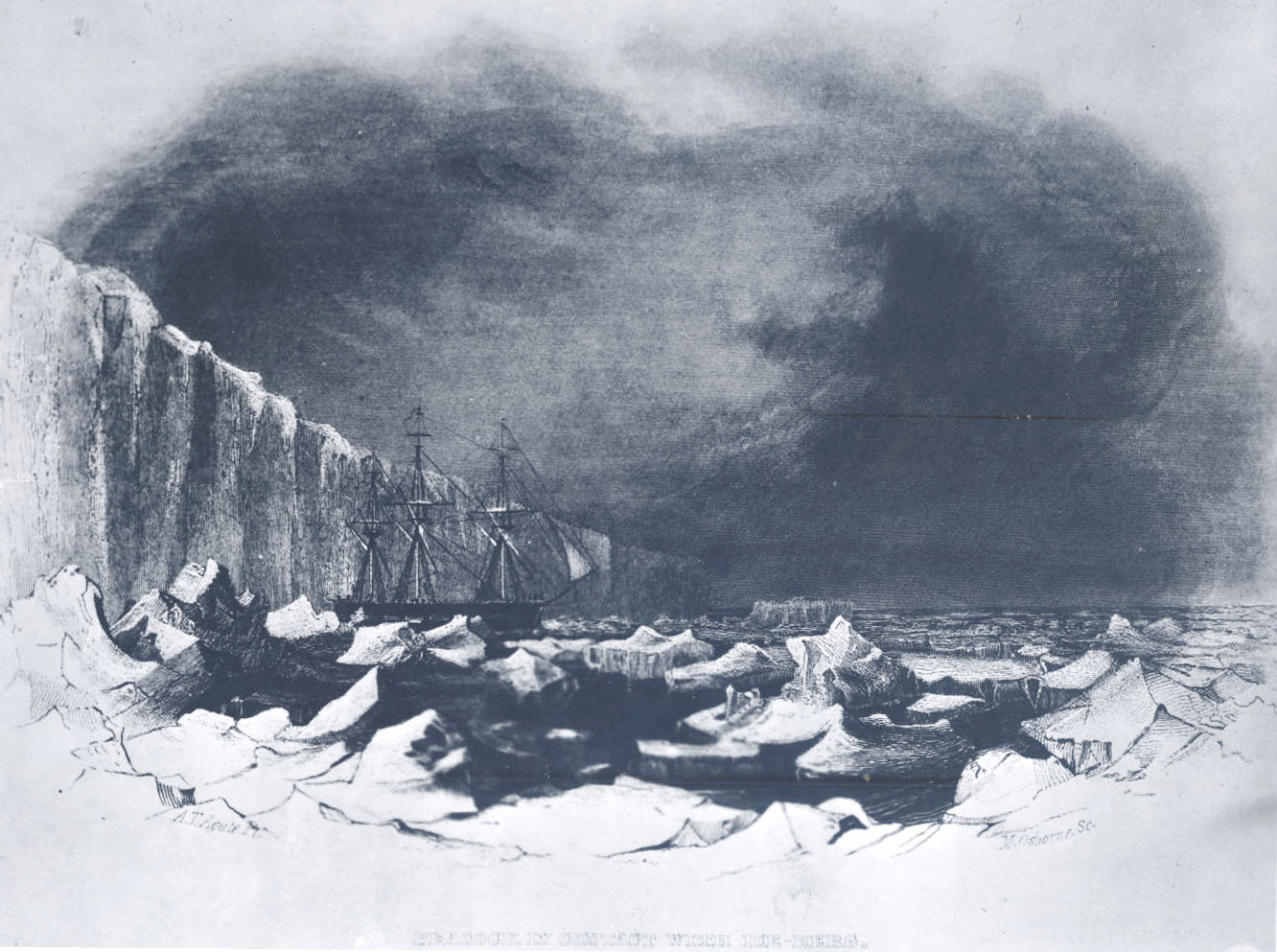Three commissioned U.S. Navy ships have been named Umpqua in honor of the Native American tribe or the river in southern Oregon. The first was a monitor built during the Civil War; the other two were long-serving ocean-going tug boats built in the twentieth century. None of the three ships ever sailed near Oregon.
The first Umpqua was a Casco-class monitor, a shallow-draft armored warship. The first of this revolutionary type of ship was John Ericsson’s eponymous U.S.S. Monitor, a unique design built to counter the Confederacy’s ironclad warships. With its deck only a few feet above the waterline and a superstructure consisting only of a rotating turret, the Monitor proved itself largely impervious to damage when it fought the C.S.S. Virginia in the March 8-9, 1862, Battle of Hampton Roads. As successful as they were in protected waters, vessels based on the design of the Monitor generally were not able to travel beyond rivers, harbors, bays, and inlets for fear of being submerged by waves.
Though its workers laid the ship’s keel in March 1863, the Snowden & Mason Company of Brownsville, Pennsylvania, did not launch the U.S. Navy's first U.S.S. Umpqua until December 21, 1865, eight months after the Civil War ended. This lengthy construction period was due in part to design flaws. Navy officials had been chagrined to learn that the design allowed for only three inches of freeboard—the height of the deck above water—even before installation of turrets and other heavy equipment. On June 24, 1864, navy officials ordered that the builder raise Umpqua’s deck twenty-two inches.
The Umpqua displaced 1,175 tons, was 225 feet long, had a beam of 45 feet, and drafted 6 feet. It could travel at up to nine knots and was armed with two 11-inch smooth-bore cannons in a turret that could rotate 360 degrees. The twenty Casco-class monitors were all named for Native American tribes.
Even though the U.S. Navy had commissioned the Umpqua, it was immediately berthed at Mound City, Illinois, and never saw service. In August 1868, the navy moved the ship to New Orleans. In 1869, the navy briefly renamed all Casco-class monitors after mythological characters; and from June 15 to August 10, 1869, the Umpqua was briefly renamed the U.S.S. Fury. The Navy Department sold the ship for scrap to businessman Nathaniel McKay in September 1874.
The navy commissioned two other ships with the name Umpqua, both ocean-going tugboats. The Ferguson Steel and Iron Works of Buffalo, New York, built Tug No. 25. The Bagaduce-class tug was laid down February 19, 1919, and was launched on September 18 of the same year. Based primarily out of Charleston, South Carolina, the boat was used extensively during World War II. It was decommissioned on May 24, 1946, after being re-classified as “old ocean-going tug number 25” (ATO-25).
Umpqua, ATA-209, built by Gulfport Boiler and Welding Works of Port Arthur, Texas, was launched on February 2, 1945, and commissioned on April 2, 1945. An ATA-174/Wateree-class auxiliary ocean tug, the boat operated extensively in the eastern Pacific, the Atlantic, and the Caribbean, towing targets, barges, crippled ships, and participating in NASA Titan III rocket tests in 1965. The Umpqua was decommissioned on July 1, 1971, and turned over to the government of Colombia under the Military Assistance Program.
-
![]()
U.S.S. Umpqua (ATA-209).
Courtesy Larry D. Countryman, NavSource Naval History
Related Entries
-
![Umpqua River]()
Umpqua River
The Umpqua River, approximately 111 miles long, is a principal river of…
-
![U.S.S. Astoria (CA-34)]()
U.S.S. Astoria (CA-34)
The U.S.S. Astoria (CA-34) had many important roles during its nearly t…
-
![U.S.S. Coos Bay (AVP-25) / U.S.C.G.C. Coos Bay (WHEC-376)]()
U.S.S. Coos Bay (AVP-25) / U.S.C.G.C. Coos Bay (WHEC-376)
The U.S.S. Coos Bay served with both the U.S. Navy (1942-1946) and the …
-
![U.S.S. Oregon]()
U.S.S. Oregon
In the years after the Civil War, the U.S. government built up its mili…
-
![U.S.S. Oregon City (CA-122)]()
U.S.S. Oregon City (CA-122)
The U.S.S. Oregon City (CA-122) was the namesake of its class of heavy …
-
![U.S.S. Peacock]()
U.S.S. Peacock
The U.S.S. Peacock, a ten-gun, three-masted sloop, was the first ship o…
Related Historical Records
Map This on the Oregon History WayFinder
The Oregon History Wayfinder is an interactive map that identifies significant places, people, and events in Oregon history.
Further Reading
Mooney, James L., ed. Dictionary of American Naval Fighting Ships, Vol. VII. Washington, D.C.: U.S. Government Printing Office (for the U.S. Navy, Naval History Division), 1981.


